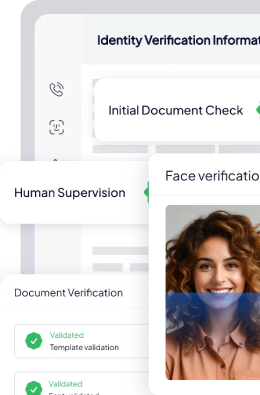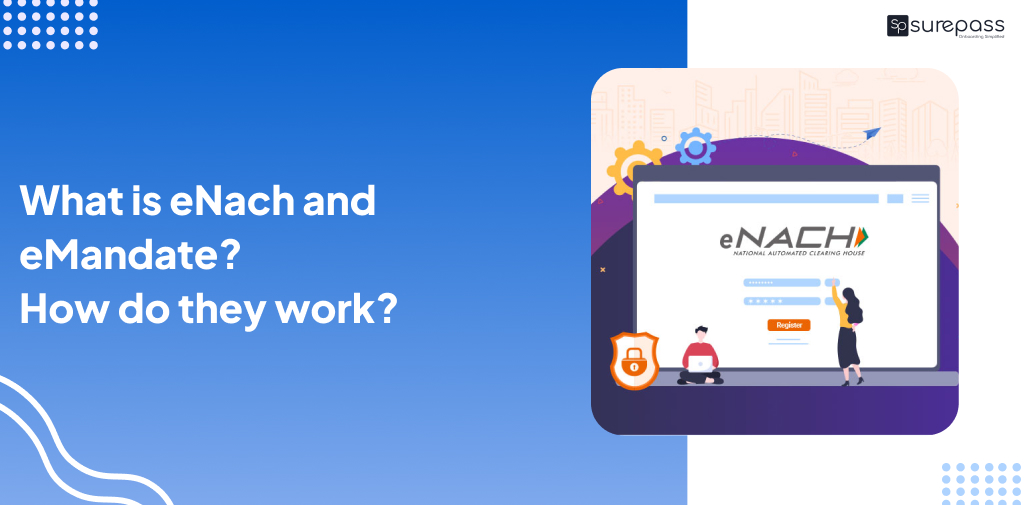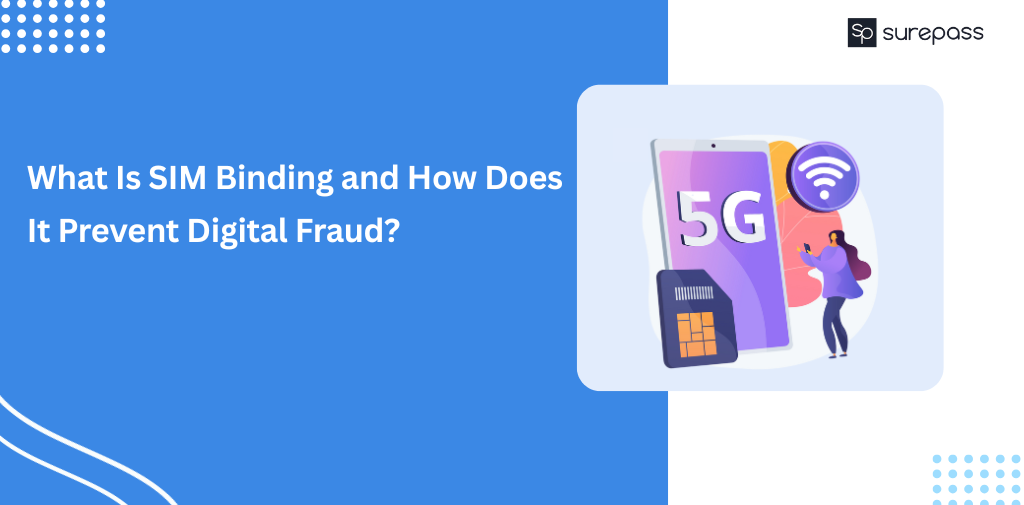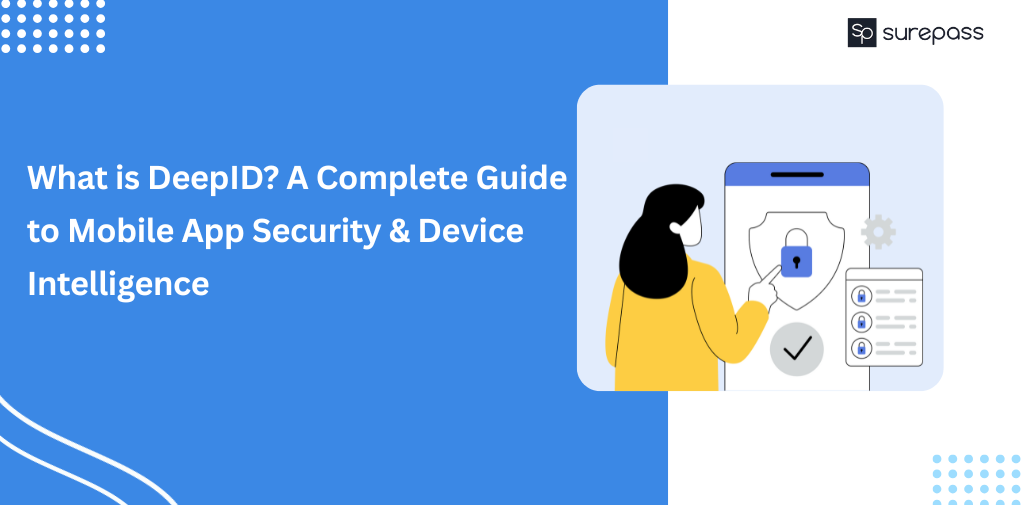Know eNACH and eMandate in Details
In today’s financial landscape and technology. eNACH and eMandate are considered revolutionary solutions for automating recurring payments. Both of these methods have brought efficiency, security and convenience to the regular transaction. If you want to know more about these, read this blog thoroughly.
What is eNach meaning?
eNach full form is Electronic National Automated Clearing House. It is an electronic payment service that NPCI (National Payments Corporation Of India) provides. It is a tool that adds automation to recurring payments and transactions. This tool is used to ease credit payments like insurance, utility bills, EMIs, and subscription fees.
It consolidates all Electronic Clearing Systems (ECS) used by lenders to automate debiting funds from borrowers. eNach is used by NBFCs, Banks and Government Bodies.
Whenever eNach is used for debits or credits, users need to digitally sign the NACH form. After filling Nach forma UMRN is generated. Here UMRN stands for Unique Mandate Registration Number. eNACH condors that the user has agreed to periodically debit the amount from their account.
What Is eMandate?
eMandate is an online way that allows customers to approve recurring payments from their bank accounts. Like eNach, it automates the recurring transaction without the need for paper-based work and signature. eMandate allows customers to easily register, modify, or cancel payments online.
3 types of Mandates
- eSign Mandate: it is approved by the customer using Aadhaar eSign and digital signature with OTP authentication. eSign Mandate is a secure and legitimate method approved by NPCI.
- Physical Mandate: The physical method refers to the manual filling of NACH forms and the physical transfer of these forms between banks.
- API Mandate: These types of mandates are registered using APIs, which enables integration and automation in payment processing.
Difference Between eNACH and mandate
The similarity between eNACH and eMandate, both offer similar automation services for recurring payments.
The regulatory body of eNACH is NPCI, it is used by businesses to automate recurring payment methods.
On the other hand, eMandate is used by the individual customer for automatic debit transactions from their accounts. These mandates cover various purposes such as bill payments, subscriptions, loans, and more.
Automate your KYC Process & reduce Fraud!
We have helped 200+ companies in reducing Fraud by 95%
Brief Overview of the Mandate Process
Here is the complete overview of the Mandate process which helps you determine which one is good. But before that let’s first know the eligibility of the mandate process.
The user should have a bank account having a mandate facility. Users should have an Aadhaar card with their phone number linked to it.
Manual Mandate Process
This process involves standard instruction provided to financial institutions and businesses like phone service providers, investment firms, utility providers, OTT platforms, charities, NGOs, and NPOs.
The manual mandate is a time-consuming and paper-based work that needs physical transfer eNACH. It is considered a less efficient method with delays and high failures.
Steps Occur In Manual Mandate Process
- The company or bank will collect signed documents from the user. The form contains the debit information that will be deducted from the user’s bank account.
- After collection, the form will be submitted to NPCI, generating the UMRN number. It will send the user application to the bank authority.
- If the bank passes the sent mandate, the specified amount on the form will be credited by the company from the user’s bank account.
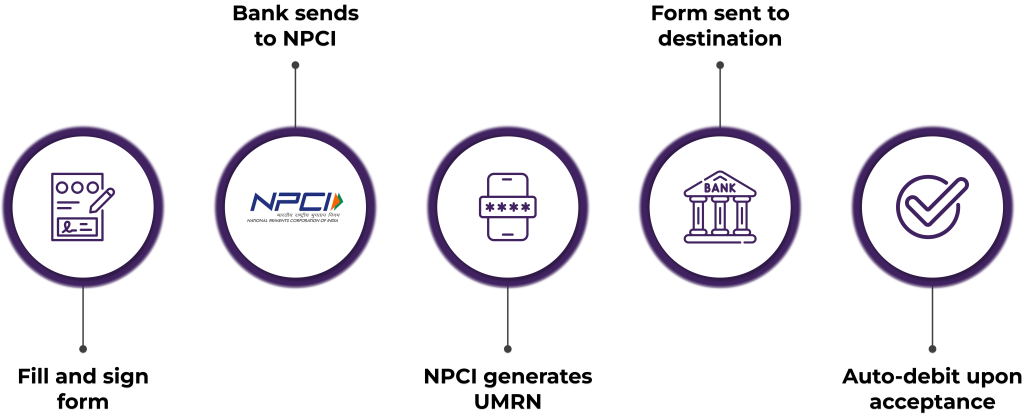
This process is inefficient, consumes around 14 days and involves too much money.
API Or eSign eMandate
On the other hand, API and eSign Mandate automate the process and reduce 15 the manual mandate process to 3 days. In the eNach and emandate process, there is no need to feel and wait for the approval. It makes the process more efficient. Here is a small overview of the eNach process.
Registration
The first step of emandate process is eNach registration. In this process, the customer registrars emandate.
After the registration of emandate, the details are sent to destination banks and NPCI. When the destination bank confirms the eNach, the details are shared with the electronic Nach provider.
Debit Sheet Generation and Sharing
After successful confirmation, a mandate detail containing a sheet is generated and sent to the NPCI provider, destination bank and sponsor bank. When a destination bank receives a full mandate debit Sheet, it generates a response.
After the generation of the response, it is shared with eNach provider.
Transfer
Now a series of fund transfers occur which is given below.
- Amount will debited from the user account
- It will transferred to NPCI
- Then it is shared with a sponsored bank account
- After that shared with the nodal bank account of eNach
- At last, it will be sent to the corporate account.
(Note: API or Application programming interface streamline and add automation to processes like Identity verification, Bank account verification, Aadhaar esigning and bulk transfer.)
FAQs
1. What is the purpose of eNach?
The purpose of eNach automate recurring payment transactions like emails, salaries, dividends, etc.
2. What is the minimum amount of e mandate?
The minimum amount of emandate process is 5000 not less than that.
3. How does eNach work?
Firstly, the user register mandate through eNach provider. The information is shared with NPI, destination banks and sponsor banks. After that, a series of fund transfers occur from one bank to another before reaching the corporate bank account.
4. What is eMandate?
eMandate is a digital way for customers to set up automatic payments from their bank accounts.
